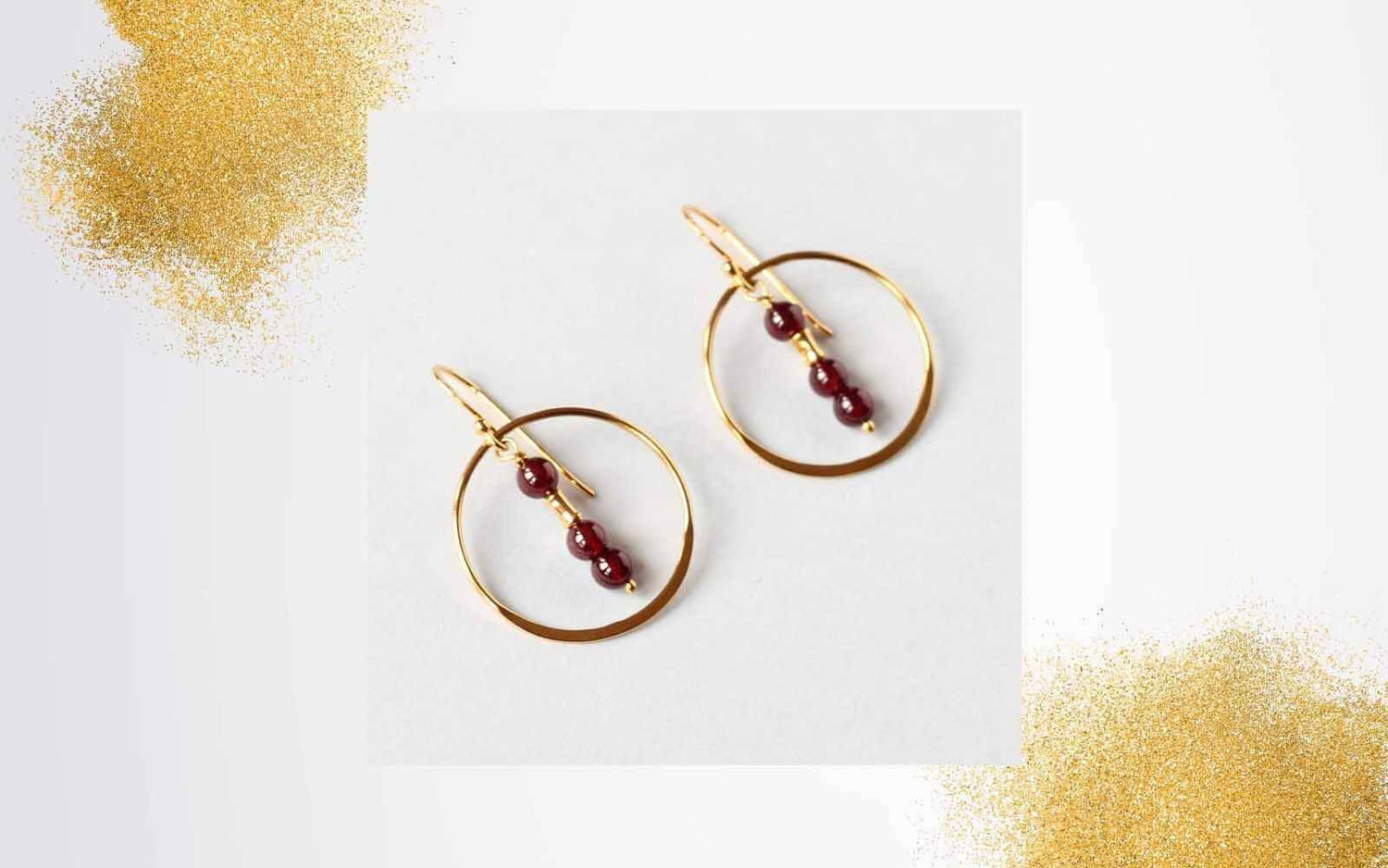
Garnet in Its Embracing Beauty
Garnet in Its Embracing Beauty
In the kaleidoscope of gemstones that grace our world, few can match the timeless beauty and rich history of Garnet. Renowned for its deep, luscious red hues, Garnet has been captivating hearts and minds for centuries. This precious gemstone is not just a feast for the eyes; it boasts a fascinating journey through time, cultures and mythology.
Did you know?
- Garnet is the January birthstone and the gemstone for the 2nd wedding anniversary.
- Variety of colours - The classic deep red colour of Garnet is the most well-known. However, this gemstone exists in a stunning array of colours. From vibrant greens like the rare Tsavorite to the fiery orange of Spessartine and the pinkish-red hues of Rhodolite, Garnet showcases a diverse palette that caters to a wide range of preferences.
- Celestial connections - Garnet has also been discovered in meteorites. Its presence in these extraterrestrial rocks emphasises the gemstone's cosmic connections. This adds an intriguing layer to its geological and historical significance.
- Industrial applications - Beyond its use in jewellery, Garnet has practical applications in various industries. Due to its hardness and abrasive properties, it is used as an abrasive material in sandpapers, waterjet cutting, and polishing compounds.
Formation and Origin of Garnet
Garnet, derived from the Latin word "granatus" meaning "seed-like," is fittingly named for its resemblance to pomegranate seeds. This gemstone is a group of minerals with similar crystal structures but varying chemical compositions. Many Garnet varieties contain a mixture of these minerals. It is never found in its pure state. Red Garnets, called almandine, are the most well-known. This gemstone exists in a spectrum of colours, ranging from green and yellow to orange and pink. The green variety, known as tsavorite, is particularly sought-after for its rarity and intense colour.
Meaning of Garnet
This gemstone embodies a spectrum of meanings that have evolved over time. Rooted in the Latin word "granatus", meaning "seed-like" or "grain," Garnet has been associated with fertility, growth, vitality and the cyclical nature of life. Its deep, earthy red tones are reminiscent of pomegranate seeds, emphasising its connection to abundance and prosperity.
Symbolism of Garnet
Garnet's symbolism extends across various cultures often representing themes of love, trust, protection and vitality. In ancient times, warriors wore Garnet as a talisman for protection, believing it could shield them from harm during battles. Its enduring red hue, reminiscent of the life-giving force of blood, connects Garnet to vitality and the life force that runs through our veins. In Victorian times, Garnet was often exchanged between lovers as a token of affection and trust.
Metaphysical Properties of Garnet
Beyond its aesthetic appeal, Garnet is believed to possess metaphysical properties. Garnet is believed to be a gemstone of passion, trust and energy due to its red colour associated with the heart and blood. It is thought to ignite the flame of love, kindling feelings of devotion, trust and commitment. As a grounding stone, it is said to provide strength and stability, helping individuals navigate life's challenges with resilience and determination.
Garnet in Mythology
Garnet's allure extends into the realm of mythology. In ancient times, it was often associated with the blood of mythical creatures, signifying strength and protection.
In ancient Greek mythology, the goddess Persephone was said to have been kidnapped by Hades and taken to the underworld. As Persephone ate pomegranate seeds while in the underworld, Garnet became a symbol of her connection to both the realms of life and death. This myth illustrates its association with transitions, regeneration and the cycles of life.
Garnets were said to protect travellers on their journeys and were often exchanged between friends as tokens that they would meet again.
According to Jewish tradition, Noah brought Garnet into the Ark as a source of light. During the flood, the sun and moon did not shine, but this precious stone shone "more brilliant by night than by day, so enabling Noah to distinguish between day and night."
The gemstone's association with protection is a recurring theme in various myths across cultures, reinforcing its reputation as a guardian gemstone. Royalty such as; Mary Queen of Scots, Queen Victoria, and the Russian Czarinas were all well-known for wearing Garnets as adornments on their garments.
Care and Maintenance
To preserve its lustre and longevity, Garnet requires proper care. It ranks 6.5 to 7.5 on the Mohs scale of hardness, making it relatively durable. However, it is susceptible to scratches and should be stored separately from other gemstones. Cleaning with a soft brush and mild soap is recommended to maintain its brilliance.
In the world of gemstones, Garnet stands as a testament to the beauty that transcends time and trends. Its rich history, symbolism, diverse varieties and captivating hues make it a gemstone of unparalleled allure. Whether adorning royal crowns or sparkling in modern jewellery designs, Garnet continues to capture the hearts of gemstone lovers.
The beauty of Garnet served as an inspiration to create two jewellery collections. Our collection featuring Garnet and Rose Quartz, captured the gemstones' elegant and subtle contrast.

Discover Our Garnet Rose Quartz Collection
Our second collection pairs tiny delicate garnet gemstones with gold vermeil beads, giving the gemstone a warm sheen in a simplistic finish.
Browse Our Garnet Gold Vermeil Collection
References:
Garnet Legends




